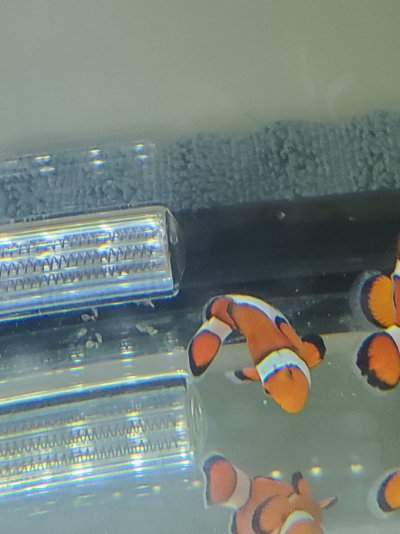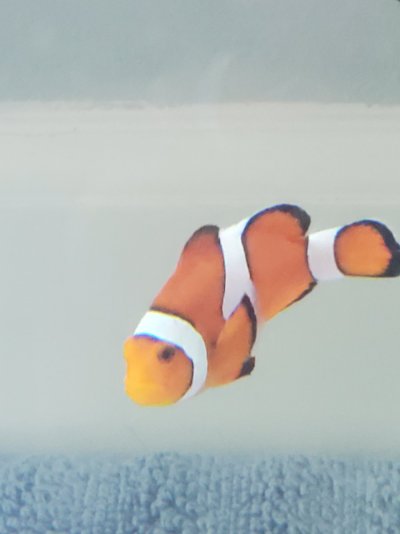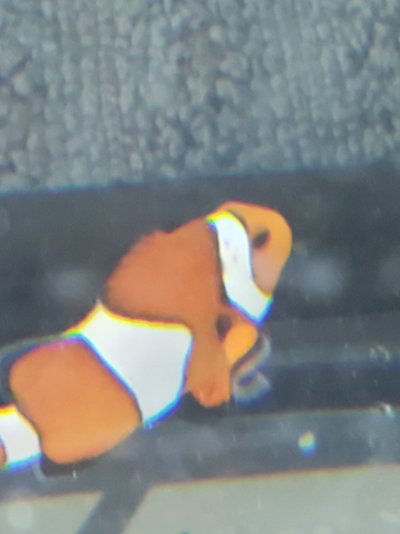Navigation
Install the app
How to install the app on iOS
Follow along with the video below to see how to install our site as a web app on your home screen.
Note: This feature may not be available in some browsers.
More options
You are using an out of date browser. It may not display this or other websites correctly.
You should upgrade or use an alternative browser.
You should upgrade or use an alternative browser.
Spots on my clownfishes?
- Thread starter Knox614
- Start date
- Tagged users None
I honestly can't see the "spots" you're referring to. Do you have any close-up shots for the resident fish disease experts?
vetteguy53081
Well known Member and monster tank lover
View Badges
Partner Member 2024
Excellence Award
Reef Tank 365
RGB
Article Contributor
Tampa Bay Reef Keepers
West Palm Beach Reefer
Hospitality Award
Ocala Reef Club Member
305 Reef Club
Wisco Reefers
Midwest Reefer
Fish Medic
MAC of SW Florida
Rock Pool Reef Keepers
R2R Secret Santa 2023
My Tank Thread
My Aquarium Showcase
Looks like early stage brooklynella. The most significant sign is the amount of slime on its body. This mucus generally starts at the facial area as well as gills and spreads across the body producing lesions as it progresses often confused with ich and can turn into secondary bacteria. Other symptoms will be lethargic behavior, refusing to eat and heavy breathing from the mucus.
Typical treatment is a formalin solution is mixed with in a separate container with either fresh or saltwater. Start with a quick dip in the formalin at a higher concentration then performing treatment in a prolonged bath of formalin base at a lower concentration in a quarantine tank. The longer the fish are exposed to the formalin treatment the more effective it will be at eliminating this issue.
If a formalin solution is not available for immediate use, temporary relief can be achieved by giving the fish a FW bath or dip in water same temperature as display tank. Even though this treatment will not cure the disease, it can help to remove some of the parasites, as well as reduce the amount of mucus in the gills to assist with respiration problems.
Treatment is best done in a QT tank using either quick cure (more effective but now harder to find) or Ruby Rally Pro. Ruby takes a little longer and initial treatment generally takes 2-3 days to really start going to work.
It's on its head.I honestly can't see the "spots" you're referring to. Do you have any close-up shots for the resident fish disease experts?
Attachments
Still on Brook? Yeah I gave them a Formaldehyde 37% bath twice. They were worse than before. If this is still Brook, then I'll have to keep them in there for a while. This is their first week on quarintine, going on 2.Looks like early stage brooklynella. The most significant sign is the amount of slime on its body. This mucus generally starts at the facial area as well as gills and spreads across the body producing lesions as it progresses often confused with ich and can turn into secondary bacteria. Other symptoms will be lethargic behavior, refusing to eat and heavy breathing from the mucus.
Typical treatment is a formalin solution is mixed with in a separate container with either fresh or saltwater. Start with a quick dip in the formalin at a higher concentration then performing treatment in a prolonged bath of formalin base at a lower concentration in a quarantine tank. The longer the fish are exposed to the formalin treatment the more effective it will be at eliminating this issue.
If a formalin solution is not available for immediate use, temporary relief can be achieved by giving the fish a FW bath or dip in water same temperature as display tank. Even though this treatment will not cure the disease, it can help to remove some of the parasites, as well as reduce the amount of mucus in the gills to assist with respiration problems.
Treatment is best done in a QT tank using either quick cure (more effective but now harder to find) or Ruby Rally Pro. Ruby takes a little longer and initial treatment generally takes 2-3 days to really start going to work.
I honestly can't see the "spots" you're referring to. Do you have any close-up shots for the resident fish disease experts?
I can see what I think is the start of what I call "bruising disease". Here is a link to a discussion about it:

Clownfish bruising/lesion?
All, Over the past two years or so, I've come across dozens of cases on the fish disease forum here of an issue with clownfish that we have not been able to identify. I've never seen it on any clownfish I've had myself, but the issue seems most common on designer clowns, which I don't work...
 www.reef2reef.com
www.reef2reef.com
Jay
Similar threads
- Replies
- 1
- Views
- 156
- Replies
- 4
- Views
- 130

















